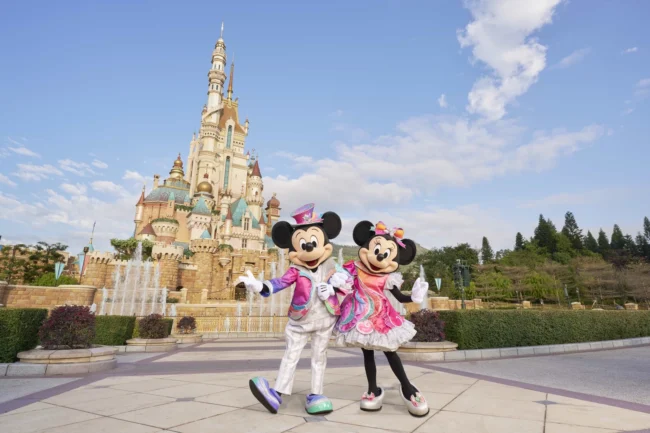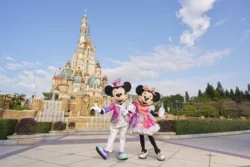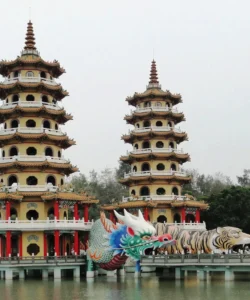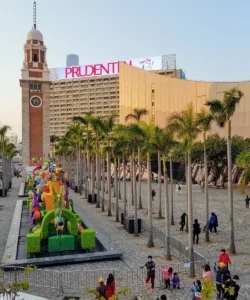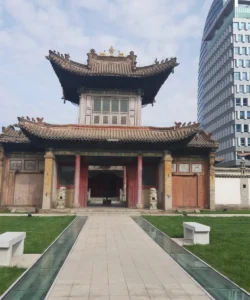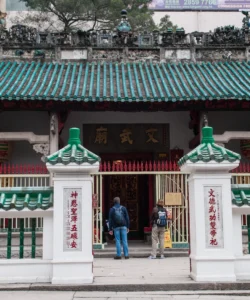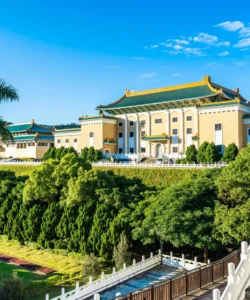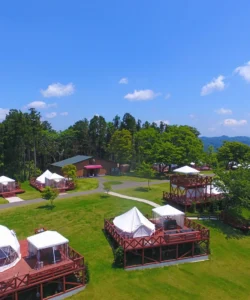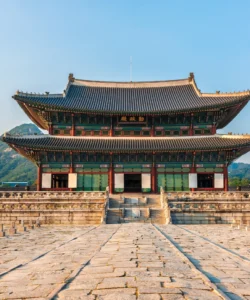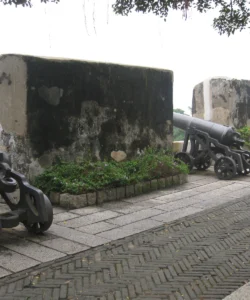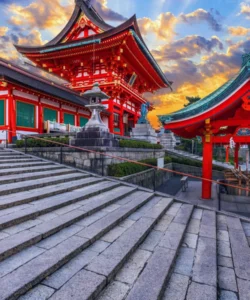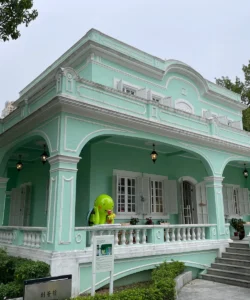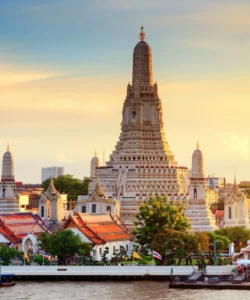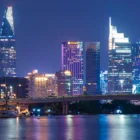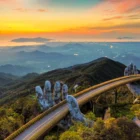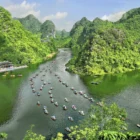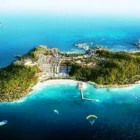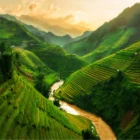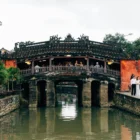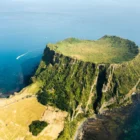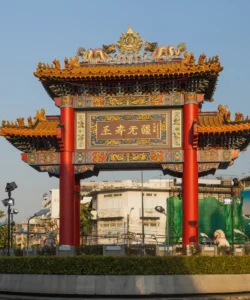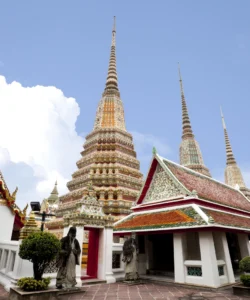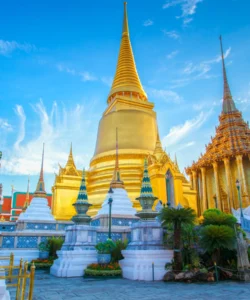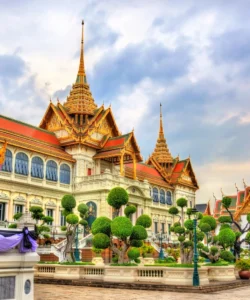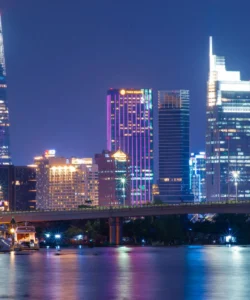Hong Kong Disneyland is a enchanting theme park located on Lantau Island, Hong Kong, where beloved Disney stories and characters come to life. Opened in 2005, it is the smallest of the Disney theme parks globally, offering a compact yet immersive experience infused with local cultural nuances.
Name: Hong Kong Disneyland (香港迪士尼樂園)
Address: Hong Kong Disneyland Resort, Lantau Island, Hong Kong. Specifically located in Penny’s Bay.
How to get there:
Hong Kong Disneyland is well-connected to the rest of Hong Kong’s public transport network:
- By MTR (Mass Transit Railway): This is the most popular and recommended method. Take the MTR to Sunny Bay Station, then transfer to the Disneyland Resort Line. The trains on this line are specially themed with Disney characters, making the journey part of the magical experience. The resort is only about 30 minutes by MTR from key stations like Hong Kong International Airport MTR Station, Kowloon Station, and Hong Kong Station.
- By Public Bus: Various local bus routes (e.g., Long Win Bus, Citybus, New Lantao Bus) also connect different parts of Hong Kong to the resort.
- By Taxi: Taxis are readily available and can take you directly to the park. The ride from Hong Kong International Airport is short, around 10-15 minutes.
- Cross-Boundary Bus: Buses operate via the Hong Kong-Zhuhai-Macau Bridge, connecting the resort to Zhuhai and Macau.
Landscape and Architecture:
Hong Kong Disneyland’s landscape and architecture adhere to the classic Disney theme park design principles while incorporating local considerations:
- Seven Themed Lands: The park features seven distinct themed areas: Main Street, U.S.A.; Adventureland; Fantasyland; Tomorrowland; Grizzly Gulch; Mystic Point; and World of Frozen. Each land is meticulously designed with specific architectural styles, landscaping, and attractions to evoke its unique theme.
- Castle of Magical Dreams: The park’s central icon, the Castle of Magical Dreams, was reimagined and expanded from the original Sleeping Beauty Castle. It now celebrates 13 inspiring Disney princesses and queens, symbolizing courage, hope, and possibility, with a distinctive and intricate design.
- Integration with Natural Surroundings: Despite being a man-made park, it is set against a backdrop of lush green mountains on Lantau Island. The park’s landscape design was meticulously planned to integrate with this natural scenery, creating a visually pleasing contrast between the whimsical park and the real mountains. Some argue it’s the only Disney park with real mountains behind its castle, adding to its unique backdrop.
- Feng Shui Principles: A significant aspect of its design is the incorporation of feng shui principles. The park’s layout, orientation of buildings, and even the placement of water features were influenced by feng shui masters to ensure harmony and good fortune, a key consideration given its location.
- Detailed Theming: As with all Disney parks, attention to detail is paramount, from the Victorian-era buildings of Main Street, U.S.A., to the jungle aesthetics of Adventureland, the futuristic elements of Tomorrowland, and the immersive Scandinavian architecture of World of Frozen.
What makes it famous:
Hong Kong Disneyland is famous for:
- “Happiest Place on Earth” in Asia: It brings the globally recognized Disney magic, characters, and storytelling to a major Asian hub, making it a dream destination for families and Disney fans in the region.
- Unique Themed Lands and Attractions: While it has classic Disney rides, it also features exclusive themed lands and attractions not found in other Disney parks:
- World of Frozen: The world’s first and largest land entirely dedicated to Disney’s “Frozen” franchise, featuring “Frozen Ever After” and “Wandering Oaken’s Sliding Sleighs.”
- Mystic Point: Home to the highly acclaimed “Mystic Manor” dark ride, a unique take on the haunted house concept without traditional “ghosts” due to cultural sensitivities.
- Grizzly Gulch: A Wild West-themed land with the “Big Grizzly Mountain Runaway Mine Cars” coaster.
- Iron Man Experience: The first Marvel-themed ride at a Disney park, allowing guests to “fly” over Hong Kong’s iconic landmarks.
- Ant-Man and The Wasp: Nano Battle!: Another unique interactive Marvel-themed attraction.
- Cultural Adaptations: The park integrates local culture, with cast members speaking Cantonese, English, and Mandarin, and food offerings that blend Western and Asian flavors (e.g., character-shaped dim sum).
- Spectacular Entertainment: Like all Disney parks, it’s known for its high-quality live shows, parades (such as the “Flights of Fantasy Parade”), and the “Momentous” nighttime spectacular with dazzling fireworks and projections on the Castle of Magical Dreams.
- Compact and Manageable Size: As the smallest Disney park, it’s often praised for being less overwhelming than its larger counterparts, making it easier to navigate and experience most attractions in a single day.
Differences from some other wonders:
Hong Kong Disneyland stands out from other wonders, particularly other Disney parks, in several ways:
- Size and Efficiency: It is significantly smaller than other major Disney parks (e.g., Disneyland Park in California or Magic Kingdom in Florida, and certainly Shanghai Disneyland). This smaller footprint allows for a more compact and often less crowded experience, making it easier for visitors to cover the entire park in a day.
- Feng Shui Integration: Its design is the most prominent example of a major international theme park being built with strict adherence to feng shui principles. This cultural consideration deeply influenced its layout and overall harmony, a feature largely absent in Western Disney parks.
- Unique Themed Lands & Rides: While it shares classic Disney themes, the exclusive development of World of Frozen, Mystic Point, Grizzly Gulch, and the Marvel-themed attractions (Iron Man Experience, Ant-Man and The Wasp) provides unique experiences not found at other Disney resorts, drawing visitors specifically to Hong Kong. Shanghai Disneyland also has unique rides, but Hong Kong’s specific set is distinct.
- Focus on Local Language & Cuisine: While all international Disney parks adapt to local languages, Hong Kong Disneyland’s strong emphasis on Cantonese, Mandarin, and English, along with its blend of Western and distinct local Chinese and Asian culinary offerings, caters more directly to its primary regional audience compared to some other parks which might have a more standardized international menu.
- Role in Hong Kong Tourism: It was built with the specific aim of boosting Hong Kong’s tourism industry, especially after events like the SARS epidemic. Its strategic importance to the local economy and tourism landscape is a key part of its narrative.
In essence, Hong Kong Disneyland offers a quintessential Disney experience with a charming, intimate scale and unique cultural adaptations that make it a distinct and beloved “Happiest Place on Earth” with a decidedly Asian flair.
